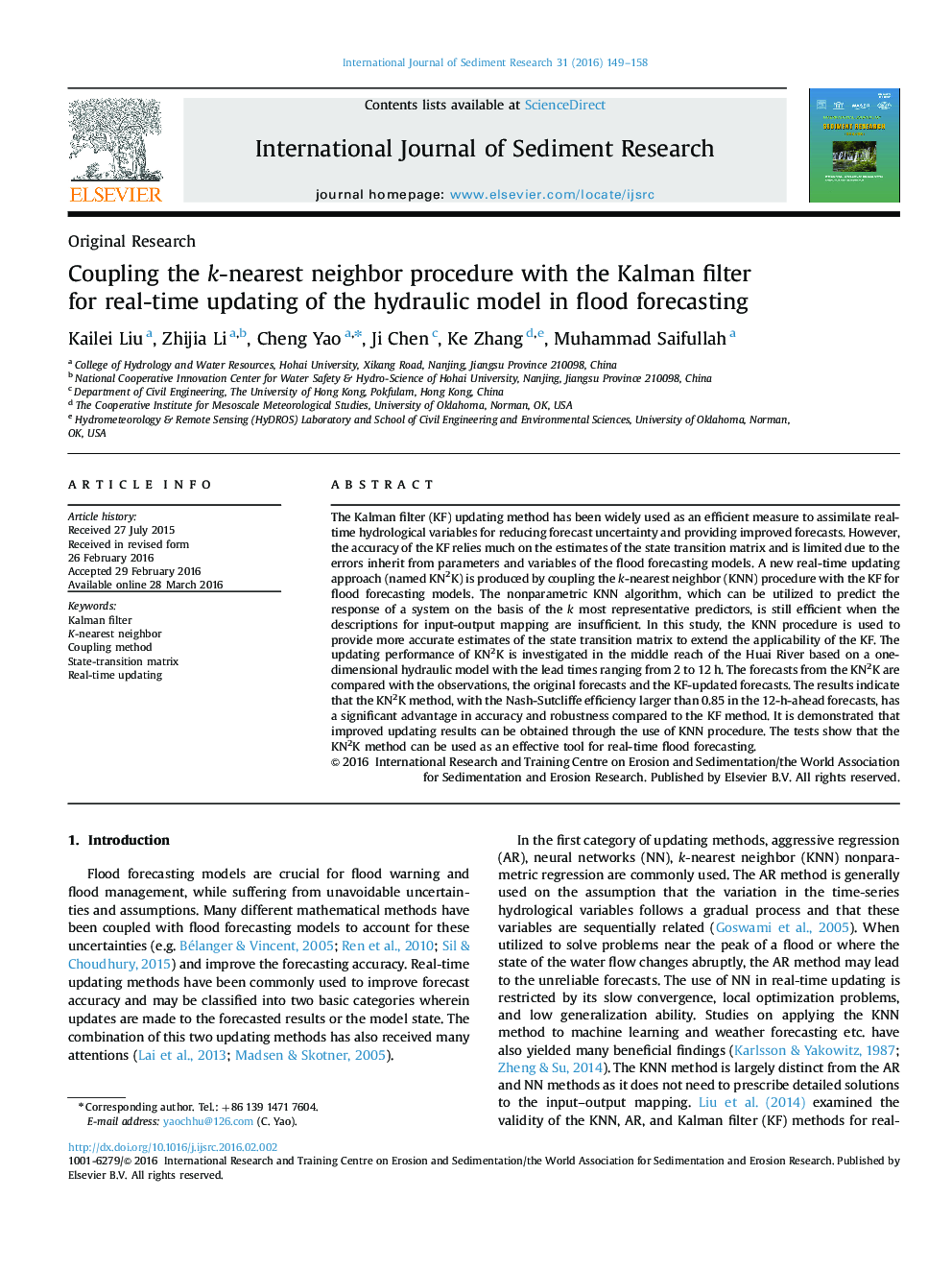| Article ID | Journal | Published Year | Pages | File Type |
|---|---|---|---|---|
| 4712251 | International Journal of Sediment Research | 2016 | 10 Pages |
The Kalman filter (KF) updating method has been widely used as an efficient measure to assimilate real-time hydrological variables for reducing forecast uncertainty and providing improved forecasts. However, the accuracy of the KF relies much on the estimates of the state transition matrix and is limited due to the errors inherit from parameters and variables of the flood forecasting models. A new real-time updating approach (named KN2K) is produced by coupling the k-nearest neighbor (KNN) procedure with the KF for flood forecasting models. The nonparametric KNN algorithm, which can be utilized to predict the response of a system on the basis of the k most representative predictors, is still efficient when the descriptions for input-output mapping are insufficient. In this study, the KNN procedure is used to provide more accurate estimates of the state transition matrix to extend the applicability of the KF. The updating performance of KN2K is investigated in the middle reach of the Huai River based on a one-dimensional hydraulic model with the lead times ranging from 2 to 12 h. The forecasts from the KN2K are compared with the observations, the original forecasts and the KF-updated forecasts. The results indicate that the KN2K method, with the Nash-Sutcliffe efficiency larger than 0.85 in the 12-h-ahead forecasts, has a significant advantage in accuracy and robustness compared to the KF method. It is demonstrated that improved updating results can be obtained through the use of KNN procedure. The tests show that the KN2K method can be used as an effective tool for real-time flood forecasting.
